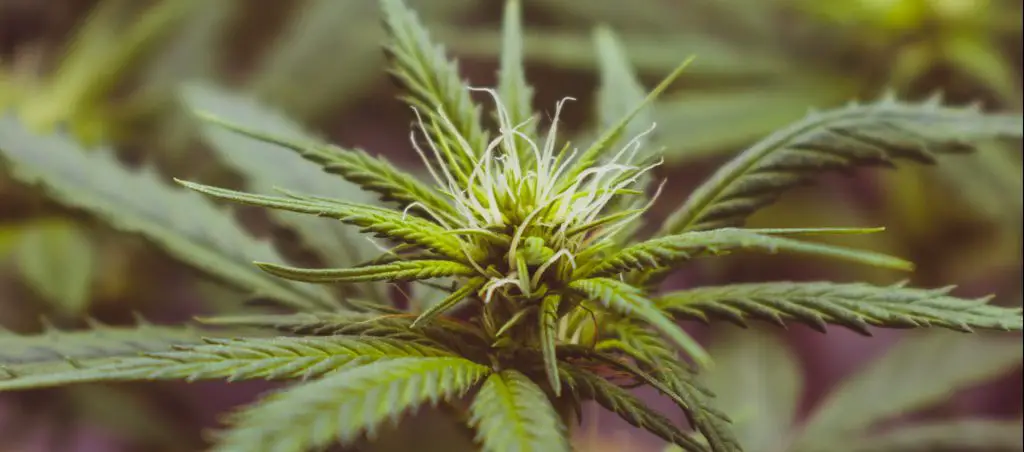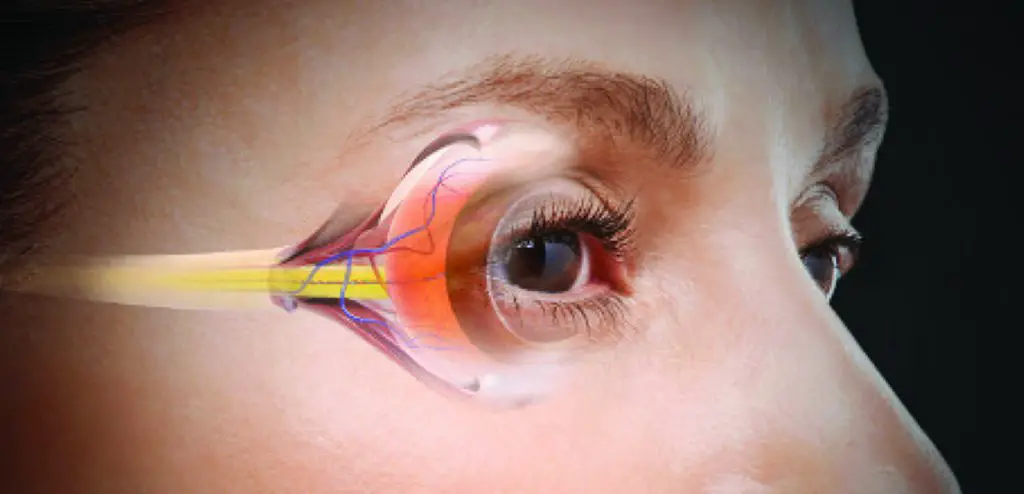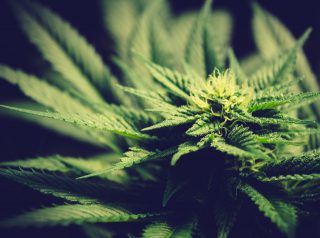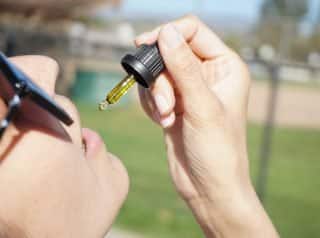At our very core, we are hardwired to seek pleasure and avoid discomfort. So, if you need a pleasurable head high and quick symptom relief, you can never go wrong with Sativa-leaning medical marijuana strains. Besides medicinal use, they are also excellent at delivering a mind-blowing recreational experience.
These pick-me-uppers are sure to perk you up. Every toke provides you with a stimulating, buzzing head high – effectively invigorating your mind while boosting productivity and creativity. On top of that, it also uplifts your mood, making it an excellent choice for remedying depression and other mood disorders. Such attributes make Sativa medicinal hybrids must-haves at the start of the day.
Page Content
What Gives Sativa Strains Its Medicinal Properties?
Marijuana’s touted medicinal benefits stem from cannabinoids, terpenes, and flavonoids. These naturally occurring organic compounds take effect by interacting with the body’s endocannabinoid system (ECS).

Cannabinoids. By nature, Sativa strains have high THC levels – the compound mainly responsible for euphoric psychoactive effects. Its presence in the body is not only purely recreational, though, as it also boasts of numerous therapeutic properties. CBD, as more people are aware of today, is highly medicinal but does not cause the high.
Terpenes. These are aromatic oils that give marijuana its fragrance and flavors. Individually, each of these terpenoids also provides medicinal effects. Like cannabinoids, the combination of terpenes vary. Most Sativa strains, though, would have pinene, limonene, and ocimene.
Flavonoids. In the plant kingdom, over 6,000 of these compounds have been discovered. Some – found only in marijuana – are called cannaflavins. These compounds play a role in color pigmentation, especially in the flowers, to attract pollinators. Like terpenes, they are pharmacologically active. More importantly, they also have synergistic effects with cannabinoids.
Medicinal Uses of Sativa Strains
The endocannabinoid system (ECS) – found in the brain and all over the body – plays an essential role in maintaining homeostasis and other regulatory functions. Thanks to its compatibility with our ECS, marijuana compounds can exert their effects by binding with endocannabinoid receptors. THC, for example, is thus able to trigger cerebral high. Along with CBD and other cannabinoids, all these compounds are also then able to provide medicinal effects.
Medical marijuana can be used as an alternative to prescription medications, especially opioid-based painkillers. However, if you are planning to augment it in your treatment regime, be sure to consult a qualified physician first.
Uplifts the Mood and Helps Alleviate Depression
Feeling down and experiencing sadness from time to time is perfectly normal. For some people, however, this emotion is a lingering part of their everyday life. Long-lasting symptoms such as overwhelming sadness, low energy levels, loss of appetite, suicide ideation and/or attempts, as well as a lack of interest in things that used to be pleasurable are the hallmark signs of depression. All around the globe, about 264 million people of all ages suffer from this condition. When left undiagnosed and untreated, it can impair day to day functioning or even loss of life.
As a remedy, modern medical science has made it possible to alter the levels of certain chemicals in the brain using antidepressants. However, these synthetic medications can cause unpleasant side effects such as gastrointestinal (GI) bleeding, cardiovascular problems, sexual dysfunction, and hepatotoxicity. Thankfully, people could turn to medical marijuana as an alternative.

THC has shown potent antidepressant properties, which contribute to the overall mood-elevating effect of cannabis. It improves the mood and eases symptoms of depression by restoring the homeostasis in brain chemistry. On top of that, it also exerts lesser adverse effects compared to traditional medications.
If you want to try medical marijuana to help ease the symptoms of depression, opt for Sativa strains with high THC concentrations as they inherently make you cheerful. After all, THC intake produces a euphoric high, which increases the production of feel-good neurotransmitters such as dopamine and serotonin.
The following high-THC Sativa strains excellent choices for uplifting the mitigating mood depression:
- Jack Herer
- Sour OG
- Sour Diesel
- Blue Dream
- Amnesia Haze
- Lemon Haze
- Tangilope
- Amnesia Lemon
- Super Lemon Haze
- Strawberry Cough
Invigorate the Mind and Combat Fatigue
In this fast-paced modern world, productivity is the name of the game. As such, those who excel in life are full of vigor and energy to get things done. However, not everyone could be energetic and motivated at all times. In fact, some – if not most – adults suffer from fatigue, which is characterized by persistent and overwhelming exhaustion.
When you are fatigued, you have little to no motivation or energy, so you’ll feel too tired to perform your responsibilities at work, school, or at home. Getting a good night’s sleep, if you could, does not help either. Not to mention, you may experience recurring headaches, muscle pain, memory problems, and inability to focus. Needless to say, these symptoms can be incapacitating, negatively impacting your performance.

In most cases, fatigue is caused by underlying health conditions such as allergic rhinitis, anemia, depression, fibromyalgia, and chronic kidney. Treating the source of the problem is imperative to mitigating fatigue. Chronic Fatigue Syndrome is altogether another matter. This condition has no known cause, making it challenging to diagnose and treat. At any rate, there are ways to alleviate it, albeit temporarily. One of those is with the help of Sativa marijuana medical strains.
Contrary to commonly-held stoner stereotypes, marijuana can invigorate you instead of making you lazy. It just depends on the strain you choose. In general, Sativa strains with abundant THC, limonene, and pinene concentrations produce a euphoric high that stimulates the mind and body. These effects could also sharpen focus, enhance creativity, improve productivity, increase energy levels, and loosen social inhibitions.
If you are in the mood to combat lethargy and amp up your energy levels, try these Sativa strains and say hello to a chipper, hyper you.
- Golumbia Gold
- Chiesel
- Durban Poison
- Green Crack
- Pineapple Express
- Jillybean
- Lemon Haze
- Maui Strawberry
- Tangerine Power
- Ghost Train Haze
- Maui Waui
Stimulate the Appetite
One of the “side effects” of marijuana is the “munchies” or the insatiable desire for food. THC interacting with endocannabinoid receptors prompts the release of ghrelin. Consequently, this hunger hormone signals the brain, stimulating appetite, and promotes fat storage. It also makes food seem more appealing through the intensification of the sense of olfaction and gustation. Unsurprisingly, eating becomes more pleasurable.
If you are on a diet trying to lose weight, munchies might be bad news. This “side effect” of weed consumption, though, is immensely helpful for chemotherapy patients as well as those who suffer from cachexia (wasting of the body) due to cancer or HIV. Some medications and treatments like chemotherapy produce side effects such as nausea, vomiting, and loss of appetite, making it hard to swallow food.

Not getting enough nutrition hinders recovery from an illness. In cases like this, the munchies effect really comes in handy as it brings back the zeal for a hearty meal. On top of that, marijuana also has antiemetic properties to suppress nausea and vomiting.
Ready to eat ’til you drop? Try these appetite-boosting Sativa strains:
- Somango XL
- Haze Berry
- Sour Diesel
- Amnesia Haze
- Bubblegum XL
- Sour Diesel
- Sonoma Coma
- Orange Skunk
- Diablo OG
- Pineapple Express
Ease Symptoms of ADHD
In a world where succeeding in almost everything requires sustained focus and concentration, people diagnosed with Attention Deficit Hyperactivity Disorder (ADHD) are at a disadvantage.
ADHD is a mental disorder that commonly affects children and teens, but could also be carried throughout adulthood. This condition causes hyperactivity and impulsivity, making it hard to concentrate and finish tasks. It affects the quality of life, negatively impacting day-to-day functioning in school, work, or home. Research suggests that such symptoms can be attributed to dopamine deficiency.
Several intervention strategies could help manage the symptoms of ADHD. This includes behavior therapy and/or taking stimulants and other medications.

As for treatment solutions, what works for one does not always work for another. It is estimated that about 30% of individuals with ADHD have secondary side-effects or are not responsive to stimulant medication. For those who don’t respond to most prescription ADHD medications, medical marijuana can be an excellent alternative.
Marijuana is certainly not a cure for ADHD but has excellent potential in ameliorating the symptoms of the said condition. Sativa strains, in particular, show promise in promoting focus and concentration. It works by increasing the availability of dopamine through THC’s interaction with CB1 receptors.
Adderall and Ritalin are both widely used medications for ADHD. Compared to these drugs, marijuana exerts fewer or minimal side effects if appropriately dosed.
If you want to try medical marijuana as an alternative for ADHD medications, opt for these Sativa strains. They are known for enhancing focus and calming racing thoughts.
- Harlequin
- Cinex
- Sour Diesel
- Green Crack
- Black Jack
- Blueberry Headband
- Blue Dream
- Raspberry Cough
Mitigate Glaucoma
In the US, approximately 3 million Americans suffer from glaucoma. Globally, the statistics rise to about 60 million. This eye condition is caused by abnormally high intraocular pressure that may damage the optic nerve. If undiagnosed and untreated, it could lead to irreversible blindness. Among people over the age of 60, this condition is the leading cause of loss of vision.
Current treatment options for glaucoma are mainly geared towards lowering intraocular pressure. These include eye drops, prescription medication, laser treatments, and in more severe cases – eye surgery.

Unfortunately, not all patients show significant improvement after receiving treatments, so an eclectic approach is necessary. Despite its controversial nature, research suggests that THC – the main psychoactive component of cannabis – can effectively lower eye pressure by 20 to 30%. It works by activating the cannabinoid receptors in ocular tissues responsible for regulating intraocular pressure.
Several other studies attest that two cannabinoid agonists – WIN55212-2 and anandamide – along with other cannabinoids such as CBD and CBG, have potential as therapeutic agents for glaucoma. More importantly, these compounds are well-tolerated by the body. While glaucoma medications tend to lose efficacy over time, marijuana consistently lowers the eye pressure, all while relieving accompanying symptoms such as pain and nausea. On top of that, it also poses less severe side effects compared to conventional medications, as long as it is taken within the prescribed dosage.
Should you decide to incorporate medical cannabis in your treatment options, make sure to consult your physician first. If you do get the green light, though, here are the best Sativa strains that can help alleviate glaucoma:
- Chocolope
- Harlequin
- Maui Wowie
- Trinity
- Tesla Tower
- Santa Sativa
- Hashplant Haze
- Lemon OG Haze
- Pineapple OG
- Chocolate Thai
Fights Cancer and Alleviate its Symptoms
Cancer is a group of diseases characterized by unusual and abnormal cell growth. According to the Centers for Disease Control and Prevention, cancer is the second-leading cause of death in the United States next to heart disease. Currently, there is no cure for cancer, but there are ways to slow down the growth of cancer cells.
Cannabis Sativa, in particular, shows promising potential in slowing down the progression of cancer. The cannabinoids THC and CBD in medical marijuana have been found to inhibit the proliferation of glioma, all while inducing apoptosis of carcinogenic cells. Therefore, slowing down the spread of cancer cells. This might be because cannabinoids play an essential role in regulating signaling pathways involved in cell survival, invasion, angiogenesis, and metastasis.

Research findings confirm that THC has potent anti-tumor and anti-proliferative properties. It can reduce human breast cancer cell proliferation through the activation of cannabinoid receptors. CBD, on the other hand, interferes with tumor neovascularization, cancer cell migration, adhesion, invasion, and metastasization. Like THC, it also prompts the apoptotic death of cancer cells through activating TRPV2 receptors to assist in glioma cell death. It also proved to be effective at suppressing the development of human breast cell carcinoma.
Apart from helping to fight cancer, cannabis can also alleviate other symptoms accompanying the condition such as nausea, vomiting, pain, and fatigue. For this reason, more and more cancer patients are considering using medical marijuana as part of treatment. If you decide to give it a go, opt for the following Sativa strains for maximum relief:
- Harlequin
- Chernobyl
- Strawberry Cough
- Charlotte’s Web
- Chocolope
- White Fire OG
- Jack Herer
- Durban Poison
- Mango Haze
Potential Risks and Considerations
Like all other medications, marijuana can also induce unwanted side effects. While such adverse reactions are comparatively milder and more manageable than prescription drugs, they could still cause discomfort. As such, you need to know the possible risks.
Side Effects of high doses of THC:
- Dry mouth
- Dry eyes
- Lightheadedness
- Intense hunger or “munchies”
- Anxiety
- Paranoia
- Sleepiness and lethargy
- Short-term memory impairment
- Accelerated heartbeat
- Decreased blood pressure
Side Effects of Excessive doses of CBD:
- Dry mouth
- Low blood pressure
- Fatigue/drowsiness
- Diarrhea
- Decreased appetite

Make it a habit to dose appropriately or as directed by your physician to avoid experiencing such risks. Different people have different levels of tolerance for THC. In general, though, a dosage of more than 30mg daily is considered extremely high for both beginners and veteran tokers. On the other hand, CBD is well tolerated by the body, so it rarely causes problems. However, if you dose more than 1500mg daily, you may experience some of the drawbacks mentioned above.





